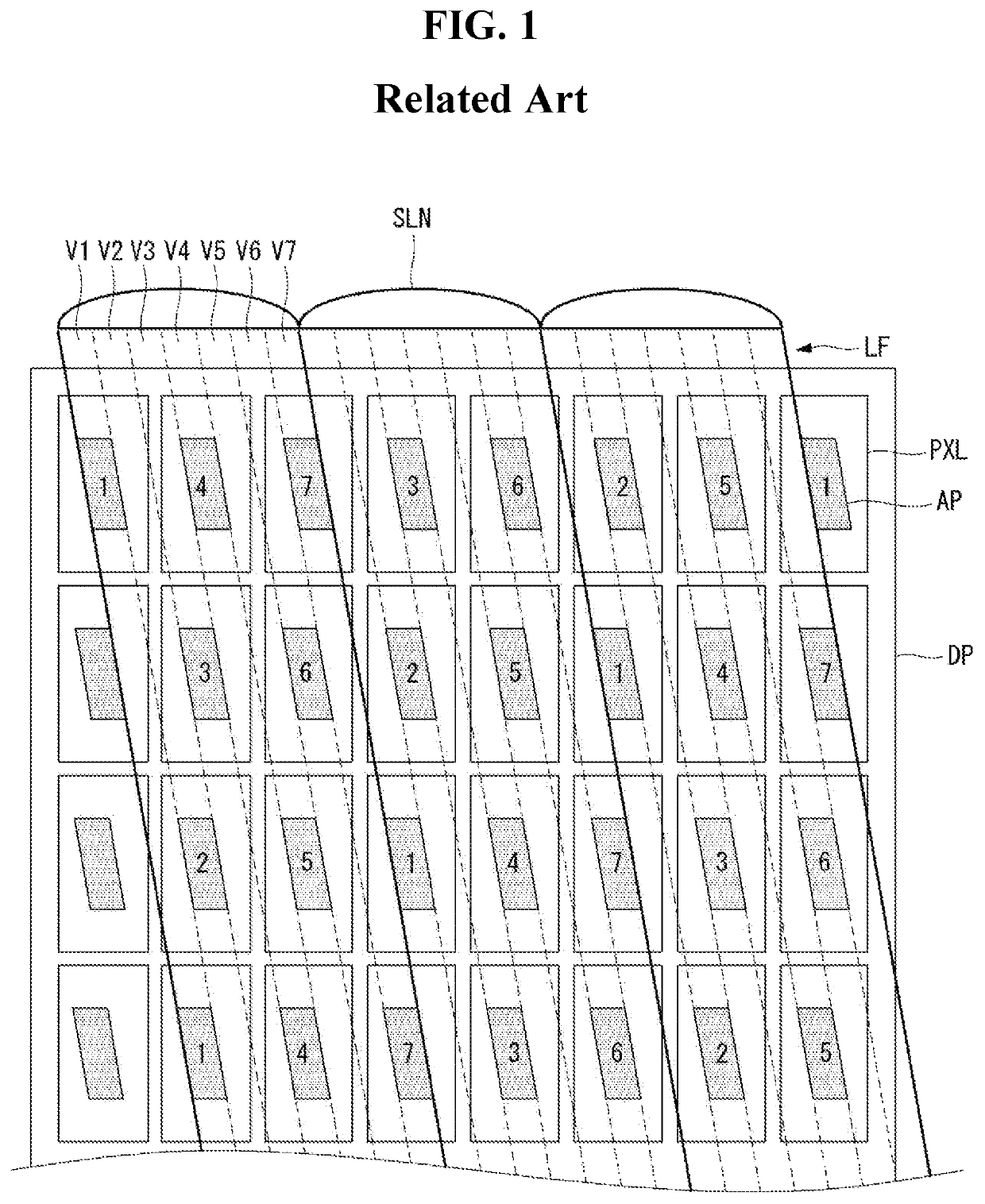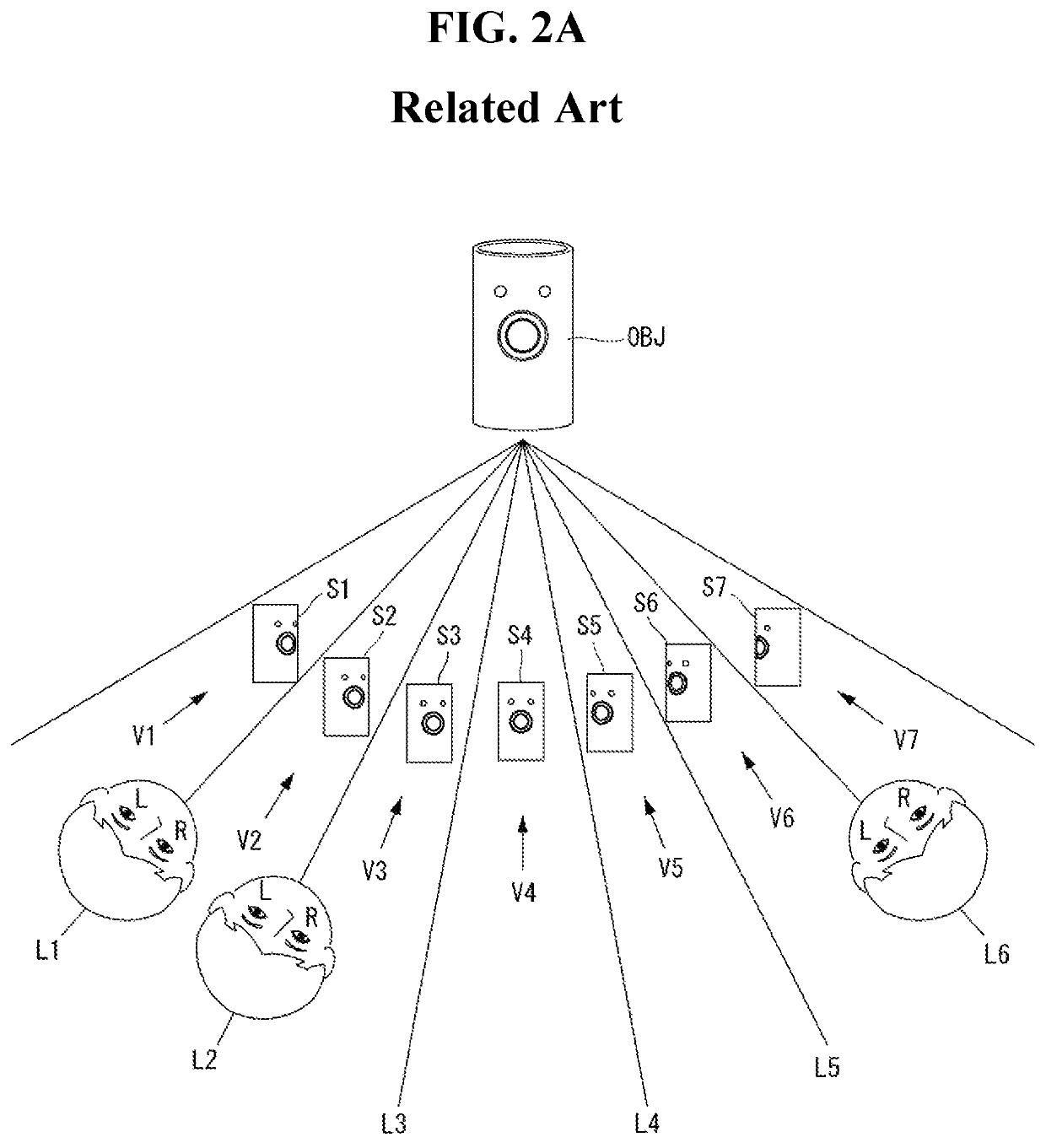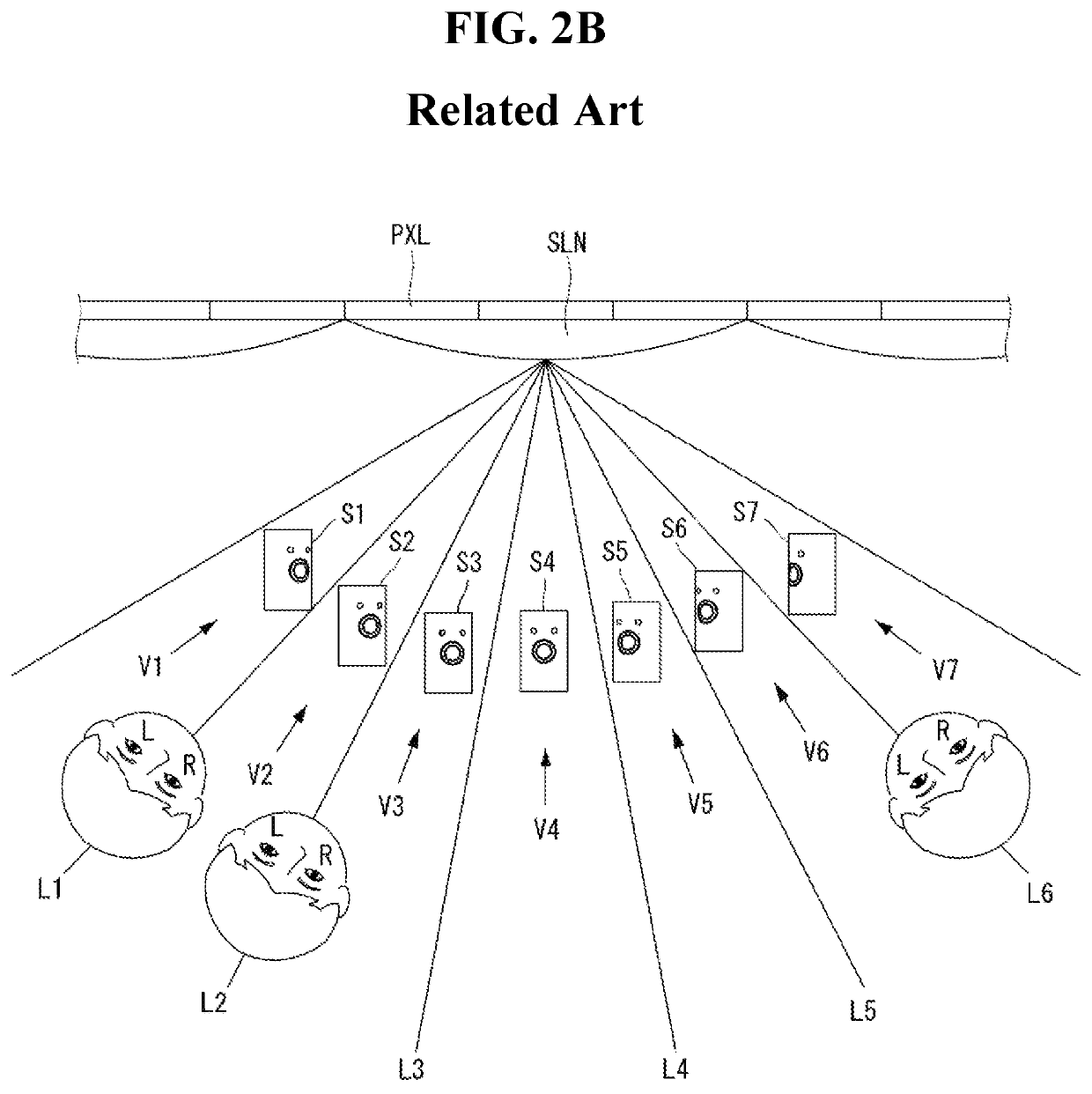Autostereoscopic 3-dimensional display
a three-dimensional display and display technology, applied in the field of autostereoscopic three-dimensional display, can solve problems such as uneven luminance, and achieve the effect of remarkable variations in luminance and no luminance variation
- Summary
- Abstract
- Description
- Claims
- Application Information
AI Technical Summary
Benefits of technology
Problems solved by technology
Method used
Image
Examples
first embodiment
[0040]Hereinafter, referring to FIG. 3, the first embodiment of the present disclosure will be explained. FIG. 3 is a plane view illustrating a lenticular lens type autostereoscopic 3D display according to the first embodiment of the present disclosure. All the components of the lenticular lens type autostereoscopic 3D display according to all embodiments of the present disclosure are operatively coupled and configured.
[0041]Referring to FIG. 3, the lenticular lens type autostereoscopic 3D display according to the first embodiment of the present disclosure comprises a display panel DP and a lens film LF disposed on the upper surface of the display panel DP. The display panel DP includes a plurality of the pixels P×L arrayed in a matrix manner. Further, the display panel DP includes various elements for driving the pixels PXL. Each pixel PXL includes one aperture area AP.
[0042]The lens film LF includes a plurality of lenticular lenses SLN having a semi-cylindrical shape and disposed ...
second embodiment
[0051]Hereinafter, referring to FIG. 5, the second embodiment of the present disclosure will be explained. FIG. 5 is an enlarged plane view illustrating a relationship between the structure of an aperture and the structure of the lenticular lens, according to the second embodiment of the present disclosure.
[0052]Referring to FIG. 5, an aperture area AP is defined or allocated in one pixel PXL. The aperture area AP has the parallelogram shape. It is preferable that the lateral width of the aperture area AP is same with the lateral width of one view area defined in the lenticular lens SLN.
[0053]It is preferable that the slanted axis LAX of the lenticular lens SLN is parallel to or corresponding to any one diagonal axis of the aperture area AP. In FIG. 5, the dotted lines inside of the lenticular lens SLN are the imaginary lines for dividing the view areas. These dotted lines are parallel to the slanted axis LAX of the lenticular lens SLN. It is preferable that the slanted line LAX is ...
third embodiment
[0063]Hereinafter, referring to FIG. 7, the third embodiment of the present disclosure will be explained. In the third embodiment, a lenticular lens type autostereoscopic 3D display in which the cross-talk area would be much more reduced will be discussed. FIG. 7 is a plane view illustrating a lenticular lens type autostereoscopic 3D display according to the third embodiment of the present disclosure.
[0064]Referring to FIG. 7, the lenticular lens type autostereoscopic 3D display according to the third embodiment of the present disclosure comprises a display panel DP and a lens film LF disposed on the upper surface of the display panel DP. The display panel DP includes a plurality of the pixels P×L arrayed in a matrix manner. Further, the display panel DP includes various elements for driving the pixels PXL. Each pixel PXL includes one aperture area AP.
[0065]The lens film LF includes a plurality of lenticular lenses SLN having a semi-cylindrical shape and disposed continuously in lat...
PUM
 Login to View More
Login to View More Abstract
Description
Claims
Application Information
 Login to View More
Login to View More - R&D
- Intellectual Property
- Life Sciences
- Materials
- Tech Scout
- Unparalleled Data Quality
- Higher Quality Content
- 60% Fewer Hallucinations
Browse by: Latest US Patents, China's latest patents, Technical Efficacy Thesaurus, Application Domain, Technology Topic, Popular Technical Reports.
© 2025 PatSnap. All rights reserved.Legal|Privacy policy|Modern Slavery Act Transparency Statement|Sitemap|About US| Contact US: help@patsnap.com



